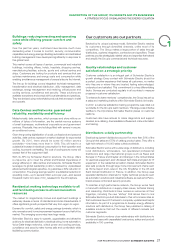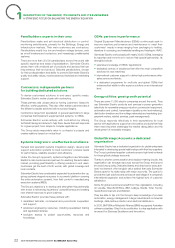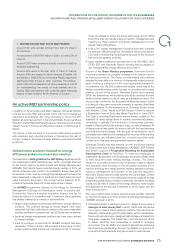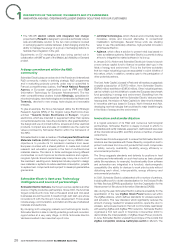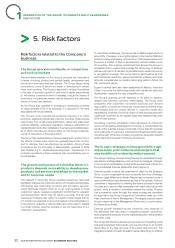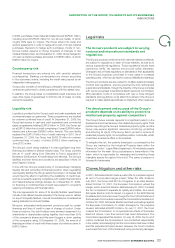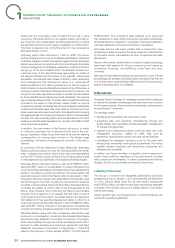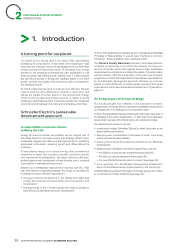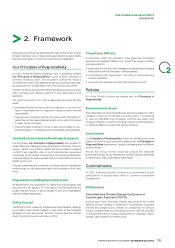APC 2009 Annual Report Download - page 31
Download and view the complete annual report
Please find page 31 of the 2009 APC annual report below. You can navigate through the pages in the report by either clicking on the pages listed below, or by using the keyword search tool below to find specific information within the annual report.
2009 REGISTRATION DOCUMENT SCHNEIDER ELECTRIC 29
DESCRIPTION OFTHEGROUP, ITSMARKETS ANDITSBUSINESSES
1
GROUP ORGANISATION
and productivity. The programme also takes environmental criteria
into account. Based on a Lean Manufacturing approach, SPS is
supported by the extension of Six Sigma and Quality and Value
Analysis programmes across the Group. By deploying these
optimisation methods globally and sharing best practices, the Group
intends to lift the operational performance of all its plants to the same
high standard.
Schneider Electric’s plants and products comply with increasingly
extensive and stringent European regulations and with international
standards governing environmental protection in all host countries.
In many cases, the Group anticipates future standards. In 1992,
Schneider Electric defi ned a formal environmental policy, which was
revised in 2004 to take account of changes both inside and outside
the Group. This policy is designed to improve production processes,
promote eco-design, integrate customer expectations into the
Group’s environmental protection approach and raise awareness
among all employees and partners about environmental protection
and energy effi ciency. In order to limit risks related to the environment
generally, the Group has implemented an ISO 14001-compliant
process to continuously improve the environmental performance of
its plants and supply chain centres .
Global, selective purchasing
Purchases correspond to around 50% of consolidated revenue
and play a crucial role in the Group’s technical and business
performance. To use this lever to the fullest, the Group has decided
to globalize 70% of purchases from strategic suppliers and increase
local sourcing in emerging markets to more than 50% as part of its
programme to re-balance costs and revenue. Schneider Electric
primarily purchases raw materials such as silver, copper, aluminum,
steel and plastics, as well as components, electronic products and
services. The supplier list includes international fi rms, as well as
many small and medium sized companies. Suppliers are selected
for their know-how, the quality of their products and services, their
competitiveness, their ability to support the Group’s globalisation
approach and their compliance with environmental and human rights
requirements. As a supporter of the United Nations’ Global Compact,
the Group encourages suppliers to join as well. A sustainable
development agreement sets out each party’s specifi c commitments.
A major IT systems project
A key factor in the deployment of Schneider Electric’s new
organisation is the globalisation of information systems within a
single IT function that has a governance role and provides services
internally.
This globalisation project involves:
•gradually deploying a single IT Department that serves all
Businesses and users within Schneider Electric in a uniform
manner. To achieve this, the most qualifi ed and competitive
providers—both internal and external—will be used as needed;
•gradually setting up a global IT infrastructure (networks, data
centres , distributed computing and help desk) that is independent
of the various managerial lines and that makes the most of the
Group’s critical size and accumulated experience;
•gradually deploying the global SAP-based ERP system known
as b ridge. After pilot testing in India, Hungary, Austria, Croatia,
Romania, Slovakia and Slovenia, b ridge was fi nally introduced
in certain French plants, as well as in Australia and in New
Zealand, in 2009. It is currently being deployed in numerous other
countries. This major programme benefi ts from specifi c tracking
and oversight.




